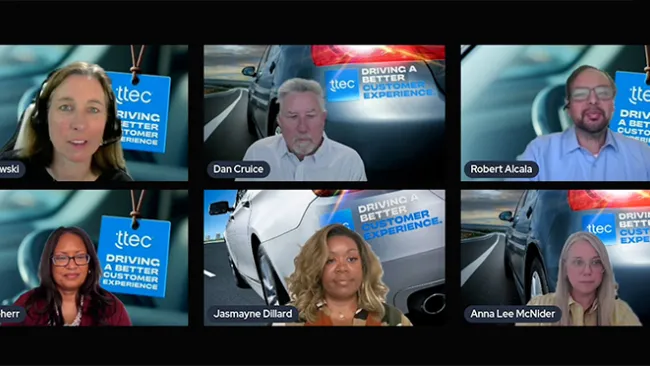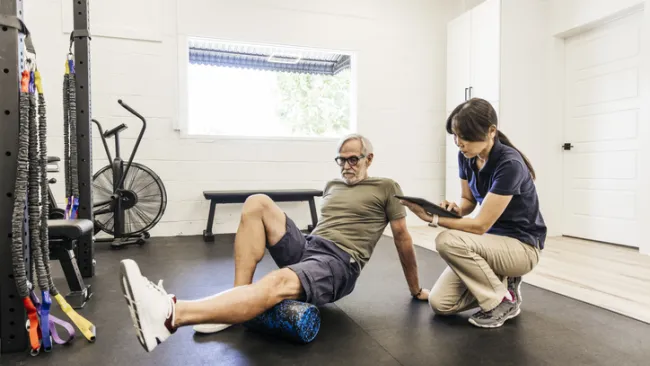It’s next to impossible to imagine life without vehicles. Since the first horseless carriages in the late 19th century, the automotive industry has grown exponentially, fueled by customer demand and aided by advances in technology.
More than ever, today’s vehicle industry is looking beyond the creation of faster and more efficient cars. Hybrid and electric vehicles are being covered by the industry press, and people are always looking for the next sleek sports car or fun SUV. While these characteristics remain important, some leading companies realize that innovation can happen beyond the engineering and design departments. There is plenty of opportunity to make major changes to the entire automotive customer experience, making sure that drivers remain loyal and return to the brand when it’s time to switch to a newer model.
The need for customer centricity in the automotive industry has never been greater. Not only are today’s customers more informed and using this knowledge to power their decisions, they’re no longer comparing a company just with competitors in the same industry. Instead, customers expect the best ever experience from each and every brand they do business with. Research carried out by TeleTech in 2013 found that more than half of customers consider a good customer experience as highly important in their decision making. Further, 68 percent note that they would consider doing business with an automotive company based on positive word-of-mouth.
Some of the most advanced automotive organizations—both manufacturers and dealers—are well aware of the need to differentiate by improving customer experience and aligning their delivery with customer expectations. These are the four leading innovations that are disrupting automotive customers’ experience:
1. Data improves manufacturers’ and dealers’ efficiency
Information is power and is essential in helping both dealers and manufacturers provide an optimal experience to their customers and remain top-of-mind when the same clients are back in the market for another vehicle.
One important aspect of a data strategy is to use this information to provide value to customers, for example proactively alerting them when it’s time for a service or an oil change. This proactive outreach is essential to make sure that owners maintain their vehicles in tiptop condition and also foster an ongoing relationship with the brand.
A frequently faced problem is siloed data. Customers are often dealing with both the manufacturer and a dealer for their pre- and post-sales needs both online and offline, with disconnected data acting as a stumbling block to a seamless experience. One large Japanese automaker is addressing this problem by rolling out the same CRM system within its corporate operations as well as with dealers so that the two can share data. This way, regardless of where a customer interaction takes place, whether at the dealer or OEM level, the data is visible by both sides, allowing for a greater level of support. If, for example, a customer took his vehicle to a dealer for maintenance, the manufacturer is aware of this interaction and its outcome.
Further, since manufacturers tend to have greater resources than dealers, they can further leverage collective data to help acquire and retain customers. A number of dealers are recognizing the value of working closely and sharing data with manufacturers to improve the customer experience and retain their business. At TeleTech, we stress the need to aggregate data at all levels to drive a consistent customer experience.
2. Adapting to a changing buying journey
Today’s customers have information at their fingertips and know how to use it. According to Polk & Co., 76 percent of the car buyer’s research is done online. The advent of easily accessible information on the Web is also contributing to fewer showroom visits before a customer decides to make a purchase.
The power of social media has brought another shift to the decision-making process, allowing customers to communicate with one another and share their experiences. Customers no longer need to know someone who has already done business with a particular company in order to get information about that brand. They can simply go online and read reviews or even ask another customer about their experience.
Automakers need to go beyond using the Web and social media for simple broadcasts or one-way communications. They need to participate in conversations happening online, and leverage available data to provide more customized and individualized interactions. That may include asking site visitors golden questions related to their visits to trigger relevant content, or creating personas and differentiated customer purchase paths online.
3. The car becomes an interaction channel
Today, almost everything can be connected to the Web, allowing customers to be themselves connected through these devices. As Forbes writer Joann Muller noted recently, the cars of the future will also be connected to the Internet. These Web-linked cars will help drivers navigate their best route home and automatically schedule maintenance appointments, among other functions. It is expected that by 2017, 60 percent of vehicles across the globe will have a connected car system, up from today’s 11 percent.
The benefits of connected vehicles are substantial. Not only does this technology provide information to the driver, such as suggesting an alternative route to avoid traffic, but it can also proactively alert both the owner or the vehicle manufacturer or dealer about an issue with the car. For example, if the vehicle requires an oil change, the owner can be invited to make an appointment through the car, instead of the dealer sending a reminder by mail. This will have a major impact on customer experience, allowing vehicle owners to remain on top of their car’s needs. Future connected cars may also be sent proactive recall notices and individual warranty information. This additional interaction channel element is essential in maintaining the relationship among customers, dealers, and manufacturers throughout the car’s life cycle in an omnichannel environment.
4. Internet connectivity expands
The constant advances in technology are also allowing drivers to tap into the functions of their smartphones while driving. In March 2014 Apple announced that a number of automakers are rolling out CarPlay, a system that connects a driver’s iPhone to the vehicle’s built-in display to make calls, send text messages, get directions, and listen to music without having to look at their phone’s screen.
And some cars may soon become wi-fi hotspots, taking the idea of connectivity to a whole new level. GM’s OnStar division is planning to rollout 4G LTE technology on their vehicles this summer, literally turning the car into an Internet connection.
While technology-enabled vehicles are the order of the day, automakers need to make sure these functions are easily updatable during a car’s life cycle, since advances in technology tend to happen much before a customer is ready to purchase a new vehicle. Further, automakers need to make sure that technological interfaces aren’t too complicated for customers to use, and also provide the necessary support to help drivers make the most of the latest innovations.
“If I had asked people what they wanted, they would have said faster horses.” This much-repeated quote, attributed to Henry Ford, epitomizes the meaning of innovation, which is defined as the introduction of new ideas, devices, or methods. Automakers need to invest in continuous innovation that make their vehicles better and safer, and improve the overall customer experience.















